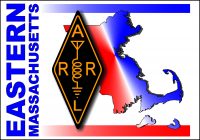STM REPORT EMA SECTION DECEMBER 2009
STM REPORT EMA SECTION DECEMBER 2009
NET SES QTC QNI QTR NM
EM2MN 30 171 388 469 N1TPU
EMRIPN 14 39 140 111 WA1FNM
HHTN 19 104 98 352 K1YCQ
WARPSN 04 07 65 NA NI1X
QTC=Traffic QNI=Checkins QTR=Minutes
CALL TOTAL PSHR
N1IQI 2036 115
KW1U 1018 NA
W1GMF 649 120
N1UMJ 593 150
K1YCQ 418 110
N1LKJ 503 120
KD1LE 65 105
KK1X 62 99
W1PLK 40 80
WA1FNM 02 NA
BPL EARNED 500 OR MORE: N1IQI W1GMF N1UMJ KW1U
Congratulations on a job WELL DONE.
Jim N1LKJ





 STM REPORT EMA SECTION NOVEMBER 2009
STM REPORT EMA SECTION NOVEMBER 2009 The
The  The
The